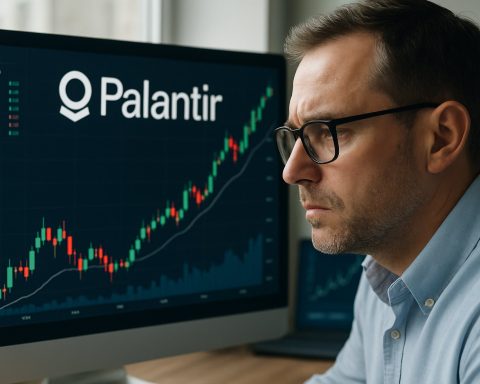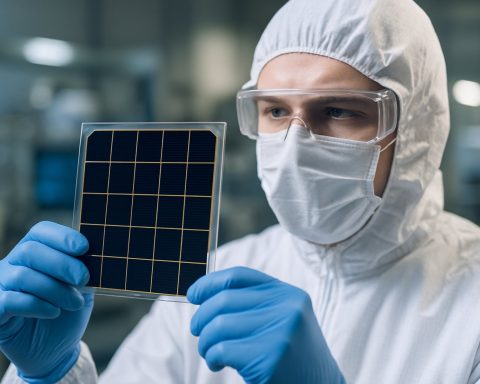- Porsche is leading a groundbreaking initiative to recycle high-voltage batteries from electric vehicles (EVs).
- The process involves shredding used batteries into a substance called ‘black mass,’ rich in valuable elements like lithium, nickel, cobalt, and manganese.
- The goal is to refine these elements for reuse in future EV batteries, reducing dependency on volatile raw material markets.
- Porsche has already produced 65 tons of black mass and aims to develop a scalable, cost-effective recycling process compliant with EU regulations.
- The initiative could contribute to a circular economy, attempting to recover 80% of lithium by 2031.
- Current technology enables recovery of up to 95% of battery materials, yet only 5% of lithium-ion batteries are recycled.
- Porsche’s efforts may set a precedent, promoting sustainability and innovation across the automotive industry.
Beneath the sleek hoods of electric vehicles lies a formidable challenge that the automotive industry is racing to tackle: the recycling of high-voltage batteries. Beneath their polished exteriors, electric cars house powerhouses of technology, yet when they reach the end of their lifespan, these sophisticated components pose a daunting problem. Porsche, known for its precision engineering and innovation, is stepping boldly into this arena with a pioneering project.
Within the cavernous research facilities of Porsche, a hint of alchemy is underway. Here, used batteries from electric vehicles (EVs) are fed into voracious machines, where they are shredded and reduced to a rough aggregate known as ‘black mass.’ This inky powder is more than mere debris—it’s a treasure trove of essential elements like lithium, nickel, cobalt, and manganese.
From this primordial soup, Porsche aims to distill the essence of future batteries for its iconic electric models. The process isn’t merely a technological feat; it represents a movement towards autonomy from fluctuating and often unstable global raw material markets. Through rigorous separation techniques, the German automaker meticulously extracts and refines these materials, readying them to form the backbone of new energy cells.
Thus far, Porsche’s endeavor has amassed an impressive 65 tons of black mass. Still, the ultimate prize remains elusive: perfecting a scalable, economically viable recycling process that aligns with strict European Union mandates, including an ambitious goal of recovering 80% of lithium by 2031. Achieving such proficiency could lay the groundwork for a revolutionary circular economy within the automotive sector, diminishing the relentless march towards raw material extraction.
The stakes are immense—not only for Porsche but for the entire industry. While today’s methods can technologically reclaim up to 95% of a lithium-ion battery’s materials, the shocking reality is that a mere 5% of these batteries ever see a second life. This disconnect signals a vast opportunity both economically and environmentally—to reclaim what would otherwise be relinquished to the earth.
As Porsche navigates this complex journey, the broader implications ripple across the industry. If successful, Porsche won’t just have refined a process—they’ll have charted a course for others to follow. It’s a pursuit not of luxury, but of sustainability—a drive to harness innovation to safeguard resources.
In a world increasingly dominated by electric motors, Porsche’s vision may well illuminate the path forward, turning a would-be waste product into a wellspring of renewable energy, fortifying our electric future one recycled battery at a time.
How Porsche is Revolutionizing Battery Recycling for Electric Vehicles
Introduction
Electric vehicles (EVs) are at the forefront of sustainable transportation, yet the industry faces a critical challenge: the recycling of high-voltage batteries. With significant environmental and economic stakes, automakers like Porsche are pioneering recycling efforts to transform this hurdle into an opportunity.
The Challenge of EV Battery Recycling
EV batteries contain valuable minerals like lithium, nickel, cobalt, and manganese. However, once the batteries reach the end of their useful life, recycling them presents both technological and logistical challenges. According to industry sources, while current methods can technically reclaim 95% of battery materials, only about 5% are reused, indicating a vast opportunity for improvement (Source: International Energy Agency).
Porsche’s Innovative Approach
Porsche has entered the fray with a strategic initiative focused on recycling these complex components. In their facilities, used batteries are processed into ‘black mass,’ a mixture rich in essential metals. Porsche employs advanced separation techniques to extract these materials, theoretically allowing them to reuse them in future batteries, thus reducing reliance on fluctuating raw material markets.
How-To: The Battery Recycling Process
1. Collection and Transportation: Used batteries are collected from various sources and transported to Porsche’s recycling facilities.
2. Disassembly: The batteries are disassembled, separating the modules for further processing.
3. Crushing and Shredding: The key components are shredded into what is known as ‘black mass.’
4. Material Separation: Advanced separation technologies extract valuable metals such as lithium and cobalt.
5. Refinement and Reuse: Extracted materials are purified and prepared for reuse in new battery cells.
Industry Trends and Market Forecasts
The global EV battery recycling market is poised for exponential growth. A report by Grand View Research projects it will reach USD 6.4 billion by 2025, driven by growing EV adoption and stringent government regulations (Source: Grand View Research).
Pros & Cons of EV Battery Recycling
Pros:
– Environmental Benefits: Minimizes waste and the need for new raw material extraction.
– Economic Benefits: Reduces costs associated with raw material procurement.
– Energy Independence: Lessens reliance on unstable raw material markets.
Cons:
– High Initial Costs: Setting up recycling facilities requires significant investment.
– Technological Complexity: Advanced technology needed for efficient material extraction.
Real-World Use Cases
Many automakers, including Ford and BMW, are monitoring Porsche’s progress closely, considering similar programs to meet sustainability goals.
Future Predictions and Insights
As recycling technology improves, we can expect more manufacturers to adopt similar processes, charting a sustainable future for EVs. Governments may also introduce stricter regulatory measures to catalyze this transition.
Quick Tips for Consumers
1. Support Sustainable Practices: Choose automakers that prioritize recycling and sustainability.
2. Battery Care: Extend your EV battery’s life by following manufacturer guidelines on charging and maintenance.
Conclusion
Porsche’s work in battery recycling represents a significant step towards sustainable automotive innovation. As they continue refining these processes, Porsche and, by extension, the industry move closer to realizing a circular economy. This initiative not only reduces environmental impact but reshapes the future of mobility.
By driving innovation in recycling, Porsche is paving the way towards a sustainable and economically viable EV market. As these technologies mature, they promise a greener and more resource-efficient future.











